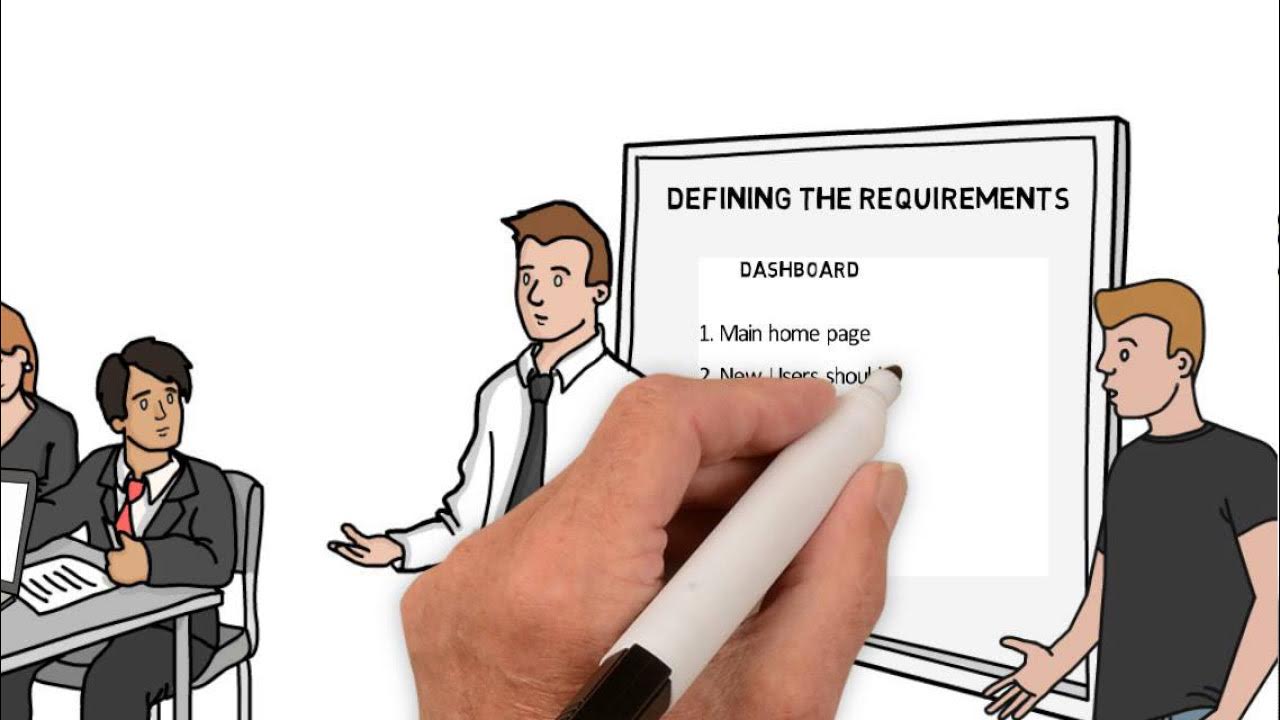Software Development Life cycle
Summary
TLDRThis video delves into the Software Development Lifecycle (SDLC), explaining its importance and stages. It emphasizes that without following SDLC, companies risk not understanding project requirements, investment needs, and potential profits or losses. The script outlines the roles of various team members, from business analysts to developers, detailing the stages from requirement collection to maintenance. It uses examples like constructing a house to illustrate high and low-level design, and discusses the importance of testing and implementation. The video aims to clarify the SDLC process in an accessible manner, encouraging viewers to engage with the content.
Takeaways
- 🔍 The Software Development Lifecycle (SDLC) is a structured process that software development goes through, from inception to maintenance.
- 👨💼 Requirement collection is the first stage of SDLC, where a product analyst or business analyst gathers requirements from customers.
- 💼 The feasibility study is a critical phase where the decision to proceed with the project is made, considering resources, lab setups, and technology.
- 🛠️ The design phase is divided into high-level and low-level design, focusing on the architecture of the application and detailed component layouts.
- 🏗️ High-level design is like planning the structure of a house, while low-level design is akin to detailing each room's layout and features.
- 💻 Coding is the phase where developers write the actual code for the software, following the guidelines set by the low-level design.
- 🔬 Testing is an essential phase where the software is rigorously tested to ensure it meets the requirements and functions correctly.
- 🔄 Installation and implementation involve deploying the software at the customer's site and ensuring it's ready for use.
- 🔧 Maintenance is the final phase of SDLC, where developers and QA engineers provide support and address any issues post-deployment.
- 📝 Service Level Agreements (SLAs) define the maintenance period, typically for six months or a year, during which support is provided to the customer.
Q & A
What is the purpose of the Software Development Lifecycle (SDLC)?
-The purpose of SDLC is to provide a step-by-step procedure or standard procedure for developing new software, ensuring that the software meets the requirements, is cost-effective, and is profitable for the company.
Why should a company follow the SDLC?
-A company should follow the SDLC to understand the requirements, estimate the investment needed, predict the profit or loss, and determine the resources required for the development of the software.
What are the roles of a Product Analyst and a Business Analyst in the SDLC?
-A Product Analyst works in product-based companies to define the product requirements, while a Business Analyst collects requirements from the customer, translates them into business language, and then communicates these requirements to the technical team.
What is the significance of the Feasibility Study in the SDLC?
-The Feasibility Study is crucial as it helps in deciding whether to take up the project or not, based on factors like resource availability, lab setup, and the technology required for the project.
Who are the key stakeholders involved in the Feasibility Study phase of SDLC?
-The key stakeholders involved in the Feasibility Study phase include the Product Manager, Finance Team, HR, Architects, and Business Analysts.
What is the role of a Product Manager in the SDLC?
-The Product Manager takes data from the Business Analyst and other stakeholders, synthesizes it, and makes decisions regarding the project's direction, including whether to proceed with the project.
What are the two types of design stages in the SDLC?
-The two types of design stages in the SDLC are High-Level Design, which defines the architecture of the application, and Low-Level Design, which details how each component of the application will look like.
Can you provide an example of High-Level Design?
-An example of High-Level Design could be planning the layout of a house, deciding on the number of rooms, the location of the kitchen, and the placement of common areas.
What is the main activity performed during the Coding phase of SDLC?
-During the Coding phase, developers start writing the code for the software based on the Low-Level Design documents and the requirements gathered by the Business Analyst.
What happens during the Testing phase of the SDLC?
-In the Testing phase, the software is rigorously tested to ensure it works as intended. This is done by the QA team, who act as a bridge between the developers and the end-users.
What is the purpose of the Installation and Implementation phase in SDLC?
-The purpose of the Installation and Implementation phase is to deploy the software at the customer's location, ensuring it is set up correctly and the customer can start using it for their business operations.
What does the Maintenance phase of SDLC involve?
-The Maintenance phase involves ongoing support and updates to the software after it has been delivered to the customer. This includes fixing defects, making improvements, and handling any issues that arise during the agreed service level agreement period.
Outlines

This section is available to paid users only. Please upgrade to access this part.
Upgrade NowMindmap

This section is available to paid users only. Please upgrade to access this part.
Upgrade NowKeywords

This section is available to paid users only. Please upgrade to access this part.
Upgrade NowHighlights

This section is available to paid users only. Please upgrade to access this part.
Upgrade NowTranscripts

This section is available to paid users only. Please upgrade to access this part.
Upgrade NowBrowse More Related Video
5.0 / 5 (0 votes)





